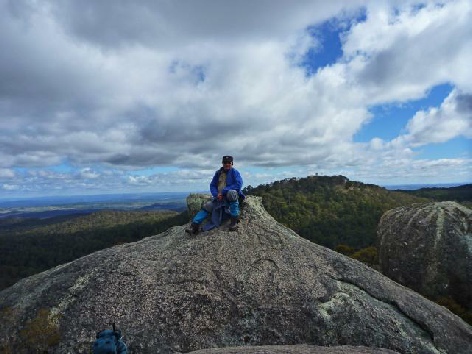

Cathedral Rocks National Park

Cathedral Rocks National Park
Rock-
Take short walks from the campgrounds, or do a long hike between them. For an exhilarating challenge, you can carry your pack for the 10.4km Barokee to Native Dog Creek walk, camp at the other end, and retrace your steps later.
Whether you’re visiting the park for a picnic lunch or camping for a few days, there are plenty of birdwatching opportunities. The screech of the glossy black cockatoo lets you know there’s a flock overhead. You may be fortunate enough to spot the endangered turquoise parrot, and remember to look out for the wedge-
Native vegetation
Although the Park is predominantly covered in bare granite or poor soils derived from granite, its vegetation shows great diversity. The rugged topography has created a range of habitats including rocky tors, mid-
Because of the high altitude, many of the plants growing here are alpine and sub-
Dry eucalypt forests
Most of the Park is covered in a mixed forest of narrow-
The understorey varies from open to quite densely vegetated, but always contains shrubs with small hard leaves. Pea flowers and mountain holly thrive here, as do the small-
Apart from patches of snow grass, the ground is generally covered with fibrous plants like the mat rush, flax lily and the native iris that produces clusters of three-
Heathlands
The park's valleys are broad and swampy creating a complex group of plant communities. Many of the fen and fen-
Fen-
Native animals
A range of mammals has been recorded in the Park. They include the New Holland mouse, common and little bent-
Small ground mammals such as marsupial mice, native bush rats and native swamp rats are also found in the Park. The koala is listed as vulnerable under the Threatened Species Conservation Act (TSC Act).
The bird life is varied. Vulnerable species such as the glossy black cockatoo, turquoise parrot and powerful owl occur in the park. The superb lyrebird inhabits the moist gullies and forests. The wedge-
Landscape and Geology
The granites of the New England batholith, which formed deep beneath the earth’s surface 270 million years ago, dominate the Park. For the next 50 million years further intrusions of molten rock was forced into fissures deep within the earth’s crust, forming some of the dykes evident in the Park today. Weathering has exposed large granite tors most notably Cathedral Rock, a series of large granite boulders perched one on top of another to a height of about 200 metres and extending approximately one kilometre.
The most recent geological feature in the Park is the basalt capping on the summit of Round Mountain, a domed peak in the centre of the Park. These basalt flows originated in the Ebor volcano, centred to the east of Point Lookout, which was active around 18 million years ago.
The topography of the Park is generally undulating with some rugged granite outcrop areas. The altitude of the Park varies from 1,100m to 1,584 above sea level at the summit of Round Mountain -
© State of New South Wales through the Office of Environment and Heritage
Click on the link for more information about Cathedral Rocks National Park
